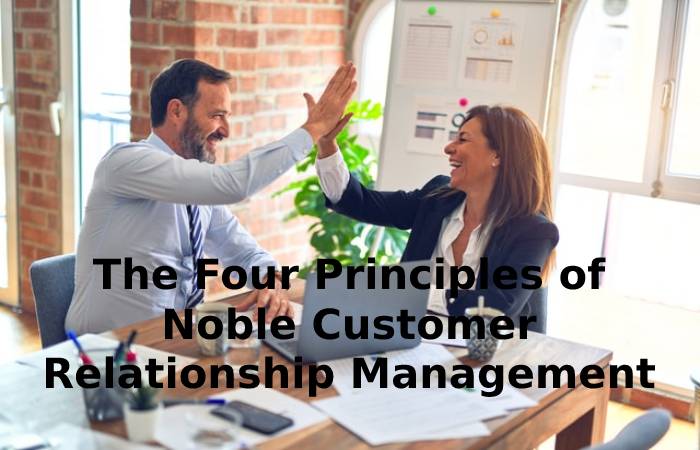Customer Relationship Management – In English, CRM stands for “Customer Relationship Management”. Customer relationship management is a set of techniques and tools dedicated to analyzing, capturing and processing information concerning prospects and customers, with the sole intention of retaining them.
Now that you know why wholesale business cards save your money and time, let’s take a look at what goes into designing and ordering them.
This attractiveness will start by offering them a better service. Also, to prospecting and loyalty techniques, computer applications complete customer relationship management. These are, in fact, software packages that deal with each customer directly, whether as part of customer service, marketing or sales.
ALSO READ: BUSINESS MARKETING
Table of Contents
Improve the Company’s Marketing Strategy with CRM – Customer Relationship
A good customer relationship management CRM technique within a company allows it to boost its marketing strategy by targeting and segmentation its contacts. These efforts will enable the company to evolve by conducting targeted marketing campaigns to raise customer awareness according to reasonably specific criteria. The company could launch e-mailing campaigns through the CRM by sending grouped e-mails that can personalize. The CRM will thus promote relational marketing instead of transactional marketing, which previously dominated. Therefore, CRM becomes an effective marketing tool that puts the customer at the center of business strategy, taking advantage of its features.
Customer Management is an Asset for the Company
For the success of a company, good customer relationship management is essential. For any company, the customer sees as a potential turnover. Thus, it is required to stand out from the competition while best meeting market expectations and, more specifically, customers directly. A company should not forget that the criteria for taking a client are not always financial, even in times of crisis. Whether to obtain a service or a product, the customer also considers responsiveness, recognition and listening. With exemplary customer relationship management, the company must be able to handle demanding customers and complaints, be responsive and communicative, be satisfied by meeting their needs,
What Technological Tools?
CRM-type customer relationship management software considers being a modern version of the “customer file”. However, current CRM software goes further. It is a tool that allows the storage and updating of lists of contacts or prospects as well as target companies or associated customers.
Here are some examples of their functionalities: integrated management of prospects from the website, management of customer complaints, consideration of customer feedback, analysis of activity, assignment of opportunities and accounts to the various sales teams, systematization and automation of sales process, direct marketing including advertising campaigns and e-mailing, archiving and management of contacts with customers.
Open source solutions, such as Open ERP, Dolibar, Vtiger or SugarCRM, are also available. Other solutions remain accessible such as Microsoft Dynamics CRM or Salesforce. but also
- noCRM.io
- Pipedrive
- Insightly
- Zoho
- Hubspot
- Agile CRM
- Teamgate
- Capsule CRM
- Zendesk Sell
- Streak
- Converge Hub
- Active
- Nimble
The Four Principles of Noble Customer Relationship Management

Knowing your customers and establishing a modified relationship with each of them is essential to meet their expectations better and thus increase their lifespan, purchases, and satisfaction.
In short, the customer relationship is an art.
In this article, we reveal four essential principles for establishing a good customer relationship:
1 – Personalize Exchanges
Go from mass communication to individualized and calibrated contact for each customer.
As far as possible, try to personalize communication with every customer by taking advantage of the personal information you have about them and the tracking of their actions.
For example, adding your customers’ first names in your e-mails will allow you to increase your conversion rates. But more importantly, an e-mail sent at the right time and responding to a specific customer action will be much more effective than a mass e-mail campaign.
The most satisfactory solution is to set up marketing automation scenarios to better adapt your communications with your customers.
Marketing automation consists of automating communications according to predefined conditions that consider the recipient’s behavior. For example, a customer who has just registered on your site will receive advice on how to complete their profile and a presentation of the various services offered, a customer whose birthday it is will receive a unique promotion, etc.
Your messages are thus more time because they target each user according to their progress in the customer journey.
2 – Know your Customers
Collect the correct information and track the right indicators to adapt your communications to each customer’s journey.
Your customers are all different. They vary in their consumption patterns, in the way they behave on your site, in the way their attention is engaged – in addition to countering as humans!
Analyzing your customers’ data at your disposal allows you to be more effective in your marketing.
An excellent way to know the degree of interest of your customers for your offers. And their degree of progress in the purchase journey is to set up a lead scoring and lead nurturing system. They automatically assign a score to each customer based on their behavior on your site and their interactions with your marketing campaigns.
Qualifying your customers in this way will let you contact them with a more relevant message and prioritize your efforts on those that offer the most potential.
3 – Ensure Brand Consistency – Customer Relationship
Reassure your customers by adopting a constant message and graphic identity on the various communication channels. To not lose the customer relationship, it is essential to work on the essence of your company: it must be immediately recognizable in your communications, whatever the channel used.
For example, you sell handmade jewellery with semi-precious stones, which influences Brittany. The words “artisanal”, “semi-precious stone”, and “Brittany” need always come up in your speeches – website, business card, social networks, newsletter. In deciding on wording for your company, you communicate its identity basically and remain consistent. Your customers will recall these keywords when thinking about your brand.
But the consistency of the customer relationship across the different channels must not be limited solely to your brand message. It is the entire experience that must be homogenized. For example, it is essential that your newsletter has the same graphic identity as your site or includes navigation to its different categories.
To do this, you can create e-mail templates in your brand colours to gain consistency and save time!
4 – Offer Value
Your customers are bombarded with hundreds of low value-added pieces of information every day. So that your customer messages are not perceived as parasites. Therefore, you have to stand out with content that is useful for them! Any relationship has an interest for both parties involved. Providing exciting content to your audience will help keep them interested.
Blog articles (hello), white papers, newsletters – webinars, Instagram stories, and Facebook Lives are all media that will allow you to provide your customers with the information they are looking for or entertain them with original content.
The mediums used depend on your products, your customers and what you prefer to use. Either way: Communicating on topics around your business will demonstrate not only that you know what you’re talking about. But also that you genuinely want to help your audience. Let’s take an example: you sell made-to-measure skirts online. Offering your customers a guide that helps them take their measurements at home will help them with their orders and their future lives.
You can also create content around fashion – designer interviews, articles on upcoming trends, photos of a complete outfit – that will engage and educate them. It is called a content strategy or inbound marketing. Your customer then comes back to you for the value you share with them. And also, it is not because you bullied them with aggressive campaigns.
Also Read: SMALL BUSINESS IN 10 STEPS

